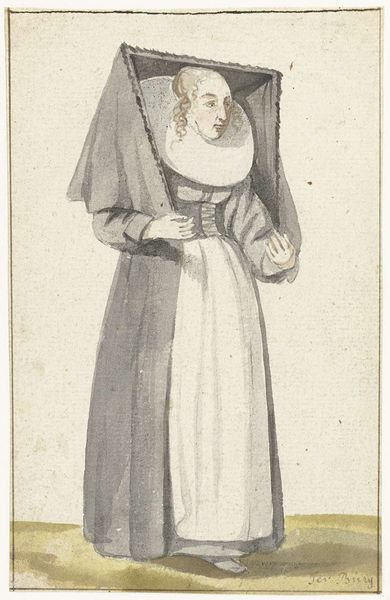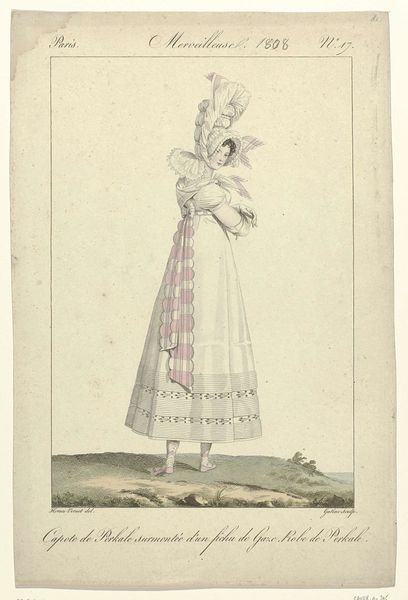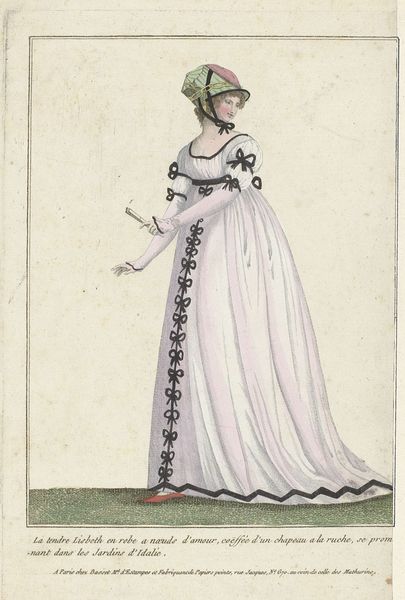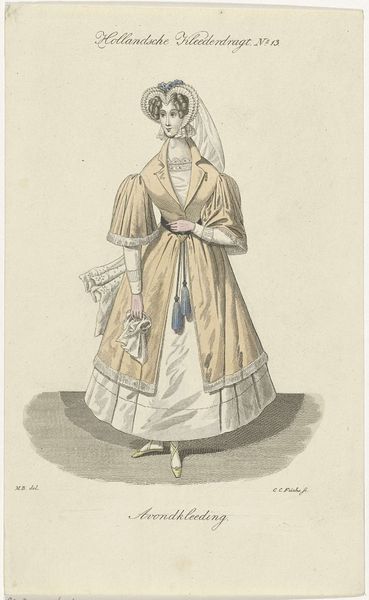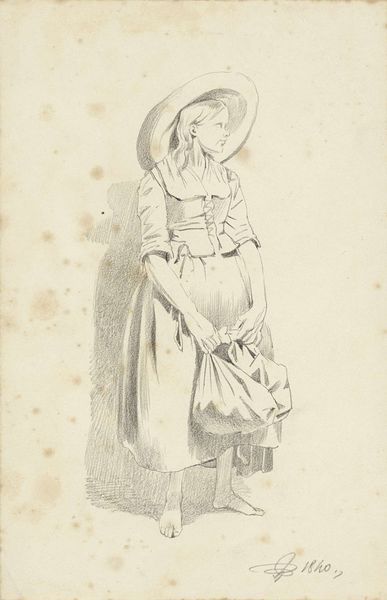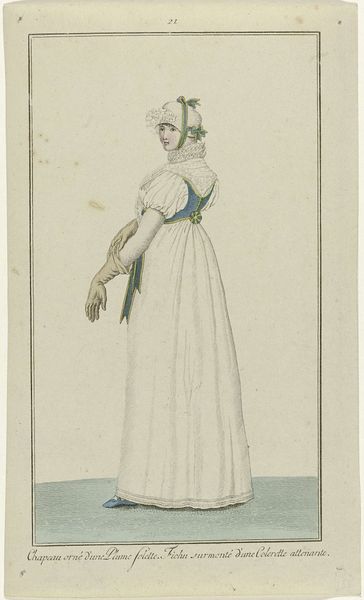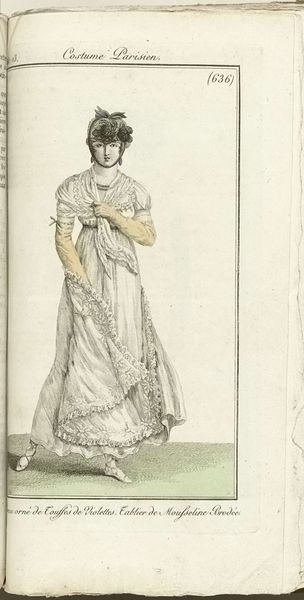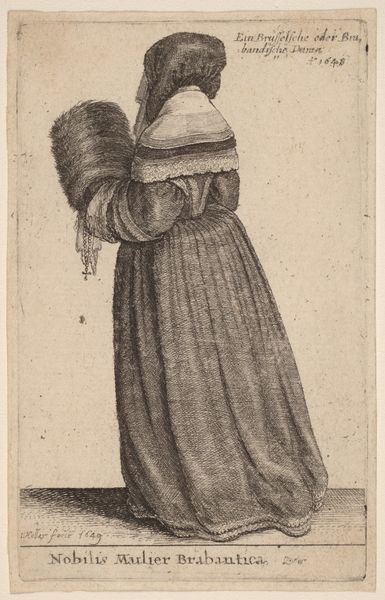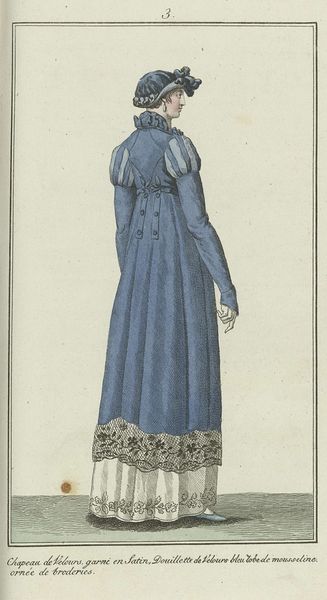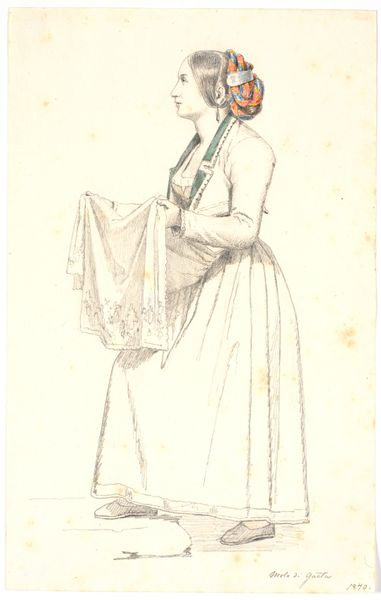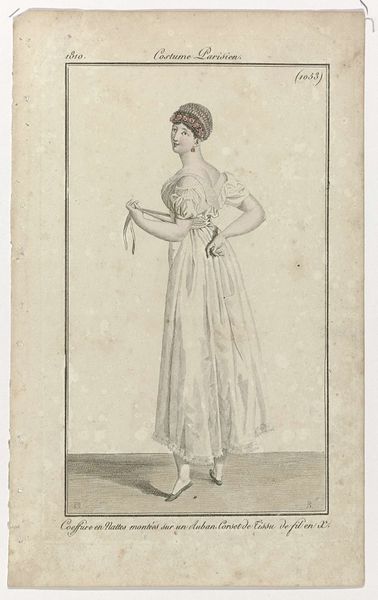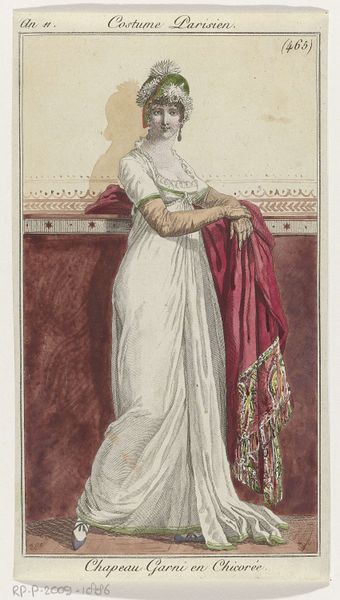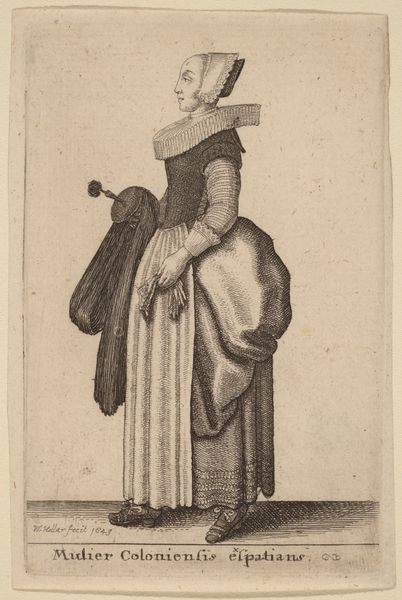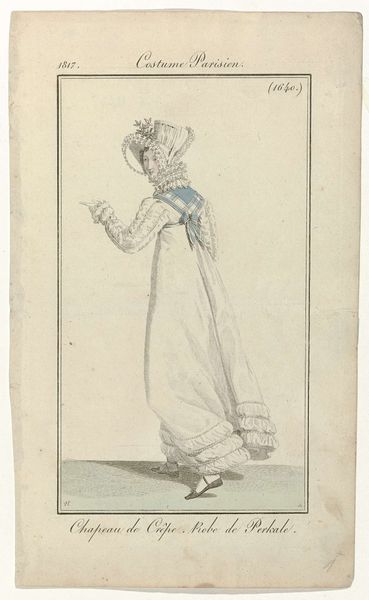
painting, watercolor
#
portrait
#
painting
#
figuration
#
watercolor
#
historical fashion
#
romanticism
#
19th century
#
watercolour illustration
#
genre-painting
#
watercolor
Dimensions: height 310 mm, width 197 mm
Copyright: Rijks Museum: Open Domain
Curator: This is Abraham Teerlink’s "Standing Woman in Italian Dress, facing right," a watercolor from between 1810 and 1857. What's your initial take? Editor: I'm struck by how delicately this Italian woman is rendered in watercolor. It lends the image an almost ethereal quality, a nostalgic idealization perhaps. I’m particularly interested in her gesture—it reads like an offering, or a plea. Curator: Her clothing certainly reflects cultural identity, wouldn’t you say? It places her firmly within a specific time and region. The headdress, the layered garments...each element speaks volumes about social customs and regional pride. We are also seeing it from today’s view of historical fashion in 19th century. Editor: Precisely! And consider the pleats of her skirt—the very precise rendering gives such volume! We're seeing someone quite adept at manipulating their chosen materials to describe textures of clothing— from coarse cloth to the diaphanous headscarf. I do wonder about its use in this image. Was it for pleasure, practice or for something else? Curator: I'm sure it may also offer more nuanced social cues beyond regional identification. Her head covering, her downcast gaze - this is very romantic. Perhaps a sign of modesty, a visual marker of her role within the community? Or simply romantic idealism typical of that era, you know. Editor: It's compelling how the artist chooses to represent the Italian dress. How the materials, themselves, become signifiers, imbued with the expectations of a place and time. And the very conscious work done by Teerlink. Curator: I'd argue it's not merely about craftsmanship, but also about transmitting and preserving cultural memory through images. The layers, the shades…all contribute to the story being told, the emotion being evoked, a connection to a time long past. Editor: Perhaps. It feels more immediate than 'memory', looking so present. All those shades, and those light gestures. She becomes something more interesting. A challenge maybe. Curator: A delightful exchange. It makes you think of the stories we project onto images and the stories images, or artifacts, tell. Editor: Yes! About where something comes from, how it was made. Material tells a history.
Comments
No comments
Be the first to comment and join the conversation on the ultimate creative platform.
